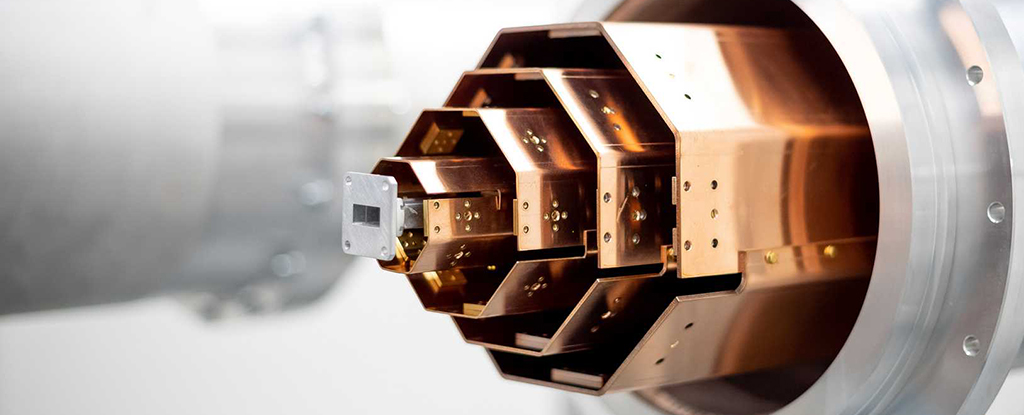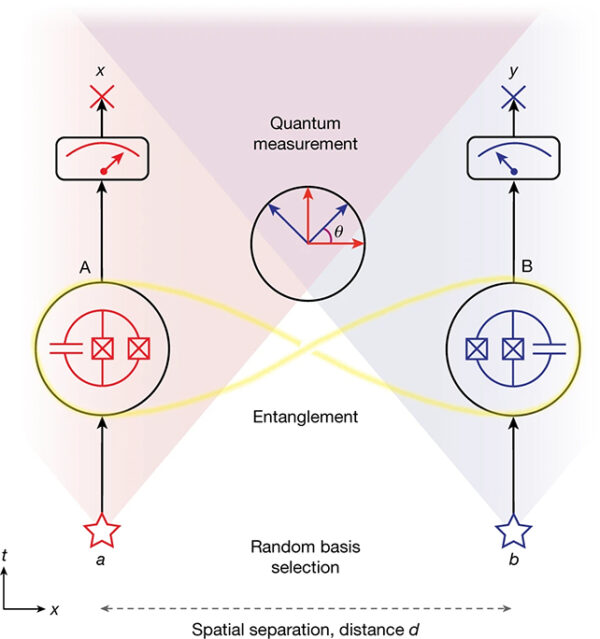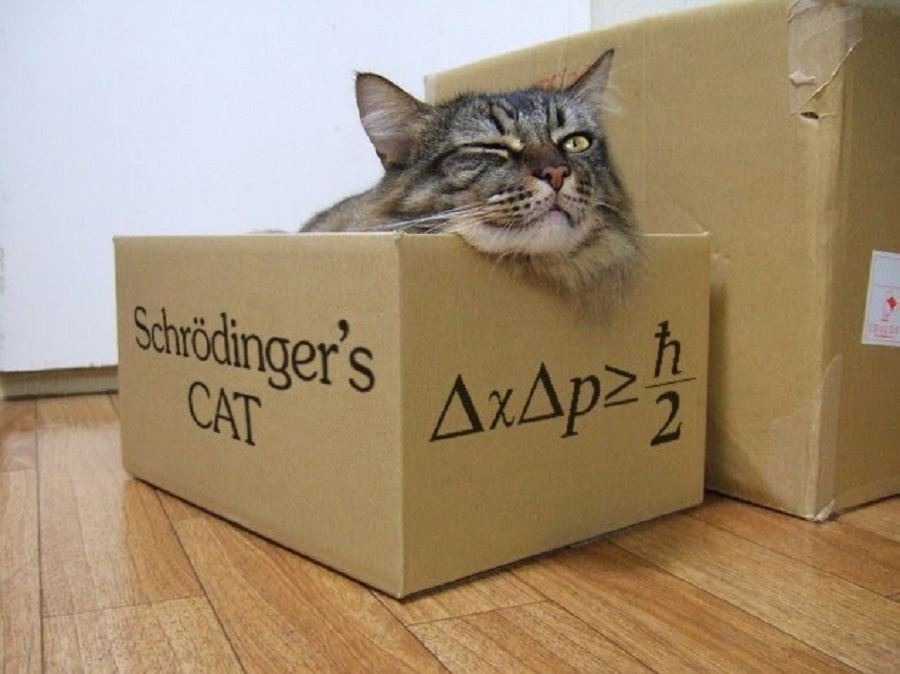
Posted on 05/15/2023 11:26:48 AM PDT by Red Badger

Quantum machine - Inside the 30-meter tube. (ETH Zurich/Daniel Winkler)
Albert Einstein wasn't entirely convinced about quantum mechanics, suggesting our understanding of it was incomplete. In particular, Einstein took issue with entanglement, the notion that a particle could be affected by another particle that wasn't close by.
Experiments since have shown that quantum entanglement is indeed possible and that two entangled particles can be connected over a distance. Now a new experiment further confirms it, and in a way we haven't seen before.
In the new experiment, scientists used a 30-meter-long tube cooled to close to absolute zero to run a Bell test: a random measurement on two entangled qubit (quantum bit) particles at the same time.
The test proposes a mathematical inequality which, if broken, shows that the theory of quantum mechanics holds together.
Not only does this experiment run the Bell test at longer distances than previously attempted, but it also runs it using superconducting circuits, which are expected to play a significant role in the development of quantum computers.
Because of the way the experiment is structured, with hundreds of micrometer-sized electronic circuits, a modified version could be used in several ways.
"With our approach, we can prove much more efficiently than is possible in other experimental setups that Bell's inequality is violated," says quantum physicist Simon Storz from ETH Zurich in Switzerland.
"That makes it particularly interesting for practical applications."
Those practical applications could include, for example, secure encrypted communications.

Bell test - Here the Bell test experiment involves entangled qubits. (Storz et al., Nature, 2023)
Despite the challenges of constructing and fine-tuning the machine, the researchers are confident that it could be adapted to work on larger scales, too, pushing the boundaries of what we know about quantum mechanics.
"There are 1.3 [tons] of copper and 14,000 screws in our machine, as well as a great deal of physics knowledge and engineering know-how," says quantum physicist Andreas Wallraff, also from ETH Zurich.
To remove all potential loopholes from a Bell test, measurements be taken in less time than it takes for light to travel from one end to another – which proves no information has been exchanged between them.
With this setup, it took light 110 nanoseconds to travel down the tube, and the measurements were taken in just a few nanoseconds less. Researchers used microwave photons to create the entanglement, and more than a million measurements were evaluated to show the violation of Bell's inequality.
It's the longest separation between two entangled superconducting qubits yet and shows the promise of qubit technology. The same tech demonstrated here could eventually find its way into full-scale quantum computers.
"Our work demonstrates that non-locality is a viable new resource in quantum information technology realized with superconducting circuits with potential applications in quantum communication, quantum computing, and fundamental physics," write the researchers in their published paper.
The research has been published in Nature.
Quantum mechanics gives a lot of physicists headaches. Things that we know to be true aren’t true at the quantum level.
LOL.

I recommend inviting the “Ezekiel” kabbalist Freeper to our list. (Am I on it?) He can get the Bible in on this entanglement thing. Oh boy!
No, not "impossible."
Rather, the experimenters themselves impose this restriction - since, if the measurement were taken after a photon could theoretically traverse the distance, the measurement wouldn't prove "entanglement."
Only when the scientists can point and say, "See, the particles must be entangled, since the measurement was made before a photon could have traversed the distance separating the two particles!"
Regards,
Same old ridiculous “Einstein was wrong” crap...
The title distracts from what, otherwise, was an interesting experiment...
Scientific click bait!
Some quibitz are more equal than others.
Am not convinced quantum computing will ever be viable. And articles like this strengthen my conviction.
Not practical for personal computers, but universities and governments. Back to the old IBM Computers that took up whole floors and had their own HVAC systems, and technicians with white lab coats..................................
Hmm, I thought awhile back some group of pin heads did a qbit entanglement test that was 100 miles.
I like my quantum mechanic, but I’m uncertain of his principles.
At some level, of course we’re all related. I don’t think I suggested otherwise.
What they are measuring travels at the same speed as the measurement.
That’s the hope. Theoretically, the sender & receiver could be billions of miles apart but the communication occurring simultaneously.
Don’t look now but a group of Berkley hippies who called themselves the “Fundamental Fysiks Group” conducted the first experiment confirming Bohr’s quantum entanglement almost 50 years ago.
Are you sure?
Uh, no.
Thanks! I was just relaxing this evening, reading this thread and came upon this surprise blessing.
If I weren't persona non grata I'd be doing something wrong, so I appreciate the positive feedback. 😉
I told Al that if he dated more he would know all about entanglements...
Disclaimer: Opinions posted on Free Republic are those of the individual posters and do not necessarily represent the opinion of Free Republic or its management. All materials posted herein are protected by copyright law and the exemption for fair use of copyrighted works.